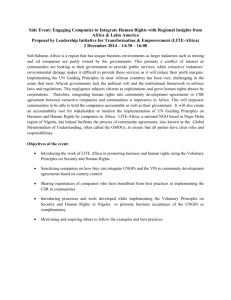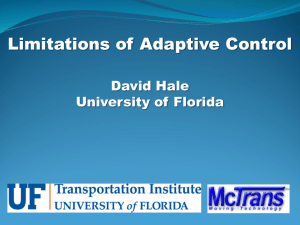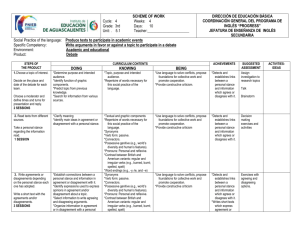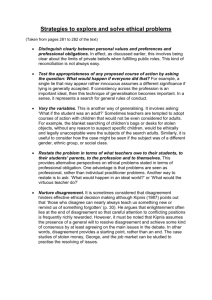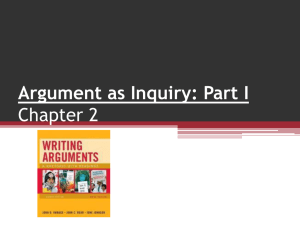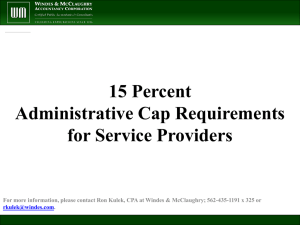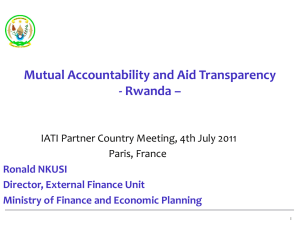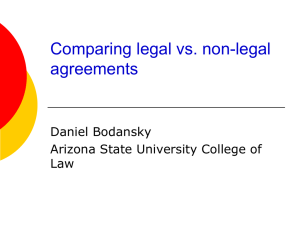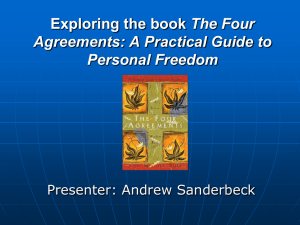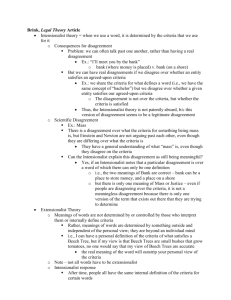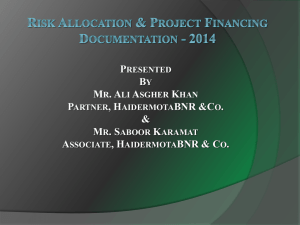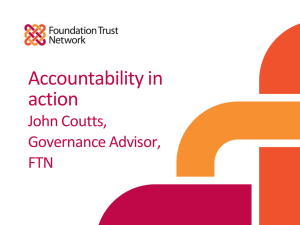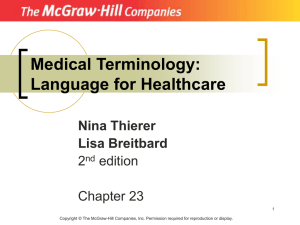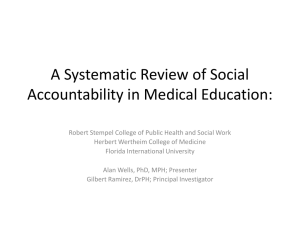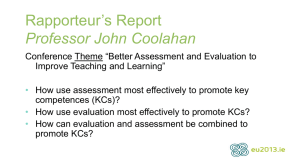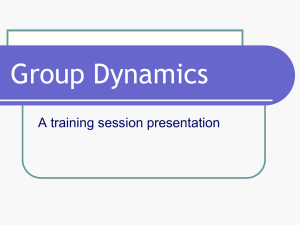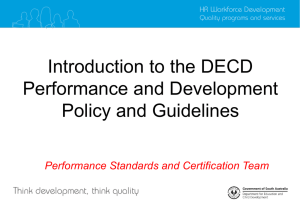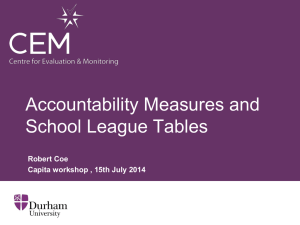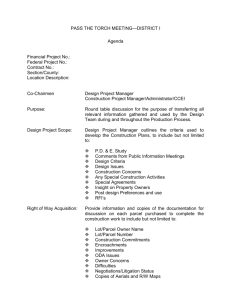effective skills for team building
advertisement
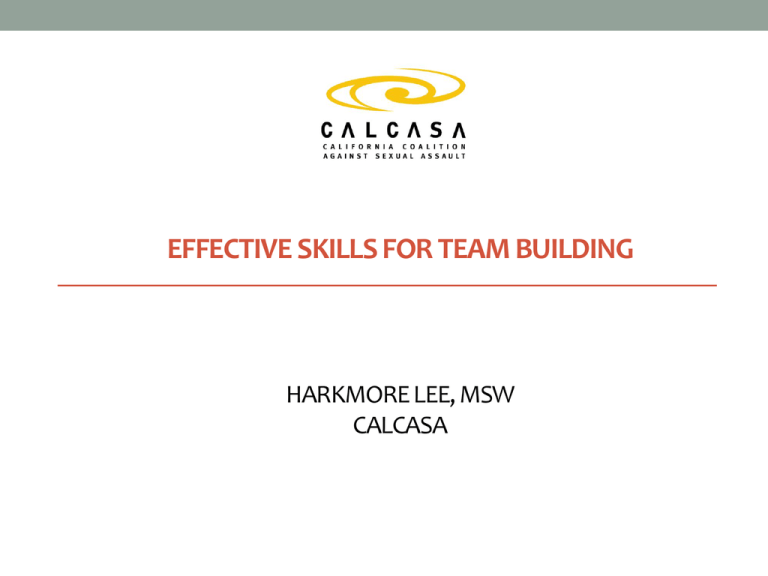
EFFECTIVE SKILLS FOR TEAM BUILDING HARKMORE LEE, MSW CALCASA Today’s Agenda 1) Group Agreements 2) Learning Objectives 3) Definition 4) Resistance to Teams in Organizations 5) Team Development, Behaviors and Performance 6) Effective and Ineffective Teams 7) Team Decision Making and Consensus Building 8) Questions and Comments Group Agreements ALL IDEAS AND POINTS OF VIEW HAVE VALUE You may hear something you do not agree with or you think is "silly" or "wrong." Please remember that one of the goals of this meeting is to share ideas. All ideas have value in this setting. Also share YOUR ideas and thoughts and avoid editorials of another colleague’s comments. SAFE SPACE What is shared and discussed with one another should “stay here” – apart from ideas and solutions that will help your own work and agency. USE COMMON CONVERSATIONAL COURTESY Please don't interrupt; use appropriate language, avoid third party/ side bar discussions, etc. Group Agreements HUMOR IS WELCOME BUT humor should never be at someone else's expense. HONOR TIME We have an ambitious agenda, so it will be important to follow the time guidelines for the next two days. CELL PHONE / TEXTING / E-MAIL COURTESY Please turn cell phones, or any other communication item with an on/off switch to “silent. If you need to respond, kindly step outside BE COMFORTABLE Please feel free to take personal breaks as needed ANY OTHERS AGREEMENTS TO ADD? Learning Objective • To gain a greater understanding of how teams develop, behave and perform. • To utilize this knowledge to develop high performing teams in centers and programs. TEAM BUILDING Group: A collection of two or more interacting individuals with a stable pattern of relationships among them, who share common goals and who perceive themselves as being a group. Essentials of a group 1. Social interaction 2. Stable structure 3. Common interests 4. Perceive themselves as part of group Team: A team is a small number of people with complementary skills who are committed to a common purpose, performance goals, and approach for which they hold themselves mutually accountable. This definition highlights the essentials of a team or in other words the team basics. Here the focus or emphasis is on three characteristics – small number, complementary skills and commitment. These are what basically differentiates a team from a group and makes a team something much more productive and result oriented than a group. We shall analyze them: • Small number – five to ten people • Complementary skills – appropriate balance or mix of skills and traits • Commitment to a common purpose and performance goals – specific performance goals are an integral part of the purpose. • Commitment to a common approach – team members must agree on who will do a particular job & develop a common approach. • Mutual accountability – at its core, team accountability is about the sincere promises we make to others & ourselves – commitment & trust. DIFFERENCE BETWEEN A GROUP AND TEAM • • • • • • • GROUP Strong, clearly focused. Individual accountability. The group’s purpose is the same as the broader organizational mission. Individual work products. Runs efficient meetings. Measures performance indirectly by its influence on others. Discusses, decides, and delegates. • • • • • • • TEAM Shared leadership roles. Individual and mutual accountability. Specific team purpose that the team delivers. Collective work products. Encourages open-ended discussions, active problem solving meetings. Measures its effectiveness direct by collective work products. Discusses, decides, & does real work together. TEAM WORK Very often we use the word team work in our organizational context without perhaps fully understanding what we mean by team work. Team work is an abstract concept. It represents a set of values that: • Encourages behaviors such as listening & responding to view points of others, giving benefit of doubt to others. • Providing support to those who need it. • Recognizing the interests & achievements of others. • Also promote performance as individuals and the performance of the entire organization. Group Exercise: “A State Divided or Unified?” RESISTANCE TO TEAMS IN ORGANIZATIONS Though a very large number of people believe in the argument for greater focus on teams, yet when it comes to using the team approach, the people are reluctant to rely on teams. Three primary sources for people’s reluctance about teams that stand out are: • Lack of conviction: Some people do not believe that teams, really do perform better than individuals. Others think that teams are probably useful, from a human relations point of view, but are hindrance when it comes to work productivity and decisive action. • Personal discomfort & risk: Many people fear or do not like to work in teams. Most people’s discomfort with teams, however is because they find the team approach; too time consuming, too uncertain or too risky. • Weak performance ethics: Some organizations lack compelling purpose that would appeal rationally and emotionally to their people. At worst, the environment of internal politics or external public relationship undermines the mutual trust and openness upon which teams depend. TEAM DEVELOPMENT & PERFORMANCE “Great people don’t equal great teams.” –Tom Peters Stages of team building: 1. Stage 1- Forming :Team acquaints & establishes ground rules. 2. Stage 2 – Storming : Members resist control by group leaders and show hostility. 3. Stage 3 – Norming : Members work together developing close relationships & feelings of camaraderie. 4. Stage 4 – Performing : Team members work toward getting their job done. 5. Stage 5 – Adjourning : Team may disband on achieving their goals or because members leave. STAGES OF TEAM DEVELOPMENT BEHAVIORS Stage Theme Task Relationship Orientation -Orientation Commitment Acceptance 1 Awareness 2 Conflict Clarification Belonging 3 Co-operation Involvement Support 4 Results Achievement Pride 5 Separation Recognition Satisfaction CHARACTERISTICS OF EFFECTIVE TEAMS • Team members should feel that their participation is • • • • • • important and personally beneficial to them. Teams should only remain intact as single entities so long they are working on a particular problem. Whenever possible, the team should include some of the persons who will be responsible for implementing the decision. Members of a team must possess the appropriate balance or mix of skills and traits. A team should be around of 5 to 15 members maximum. Members of the teams should have knowledge and information that is relevant to the problem and task. It is necessary for the team to select a leader. • The influence of members on decisions in teams should be based on their capacity to contribute ( relevant expertise) and not on the authority they possess in the organization. • Team decisions should be integrated with the normal or regular decisions of the departments or units from which the members are drawn. • Conflicts that develop within should be confronted and resolved with a problem solving approach, instead of being avoided or smoothed over. CHARACTERISTICS OF INEFFECTIVE TEAMS • You cannot easily describe the team’s mission. • The meetings are formal, stuffy, or tense. People do not do • • • • • • their best in an uncomfortable atmosphere. There is a great deal of participation but little accomplishment. Some teams exhibit to talk but much action. There is talk but not much communication. Many teams are composed of very talented people who enjoy talking but not listen to the contributions of others. Disagreements are aired in private conversations. Decisions tend to be made by the formal leader with little meaningful involvement of other team members. Members are not open with each other because trust is low. There is confusion or disagreement about roles or work. • People in other parts of the organization who are critical to the success of the team are not cooperating. There is rarely a period in a team’s history when external relations are not important. • The team is over loaded with people who have the same team player style. Style diversity leads to looking at all aspects of team effectiveness. • The team has been in existence for at least three months and has never assessed its functioning. Periodically , teams need to assess progress towards goals and to evaluate team process. CHARACTERISTICS OF EFFECTIVE TEAM MEMBERS Besides seeing the characteristics of an effective team as well as an ineffective team, it would be prudent to examine the characteristics of effective team members. It will be observed that organizational failures often are not a result of poor leadership but of poor follower ship. An effective team member is, therefore, on who: • Understands and is committed to group goals. • Is friendly, concerned and interested in others. • Acknowledges and confronts conflict openly. • Listens to others with understanding. • Includes others in the decision making process. • Recognizes and respects individual differences. ACTIVE LISTENING EXAMPLES • To convey interest in what the other person is saying. • To encourage the individual to expand further on his or her thinking. • To help the individual clarify the problem in his or her own thinking. • To get the individual to hear what he or she has said in the way it sounded to others. • To pull out the key ideas from a long statement. • I see! • Yes, go on or Tell us more. • Then the problem as you see is ……. • This is your decision then and the reasons are ….If I understand you correctly you are saying that we should ... • Your major point is … You feel that we should …. • To respond to a person’s feelings more than to his or her words. • To summarize specific points of agreement and disagreement as a basis for further discussion. • To express a consensus of group feeling. • You feel strongly that ….. You do not believe that …. • We seemed to agreed on the following points….., but we seem to need further clarification on these points. • As a result of this discussion we as a group seem to feel that Conflict Resolution. • Disagreement is a euphemism for conflict. • Groups have to learn the requisite conflict-resolution skills. • Disagreements are to be encouraged and accepted as a natural consequence of a dynamic, active organization. • Effective teams create a climate in which people feel free to express their opinions even when those opinions are at odds with those of other team members. ASPECTS OF CONFLICT • • • • • DESTRUCTIVE Diverts energy from more important activities and issue. Destroys the morale of people or reinforces poor selfconcepts. Polarizes differences in values. Deepens differences in values. Produces irresponsible and regrettable behavior such as name calling and fighting. • • • • • • CONSTRUCTIVE Opens up issues of importance resulting in their clarification. Results in the solution of the problems. Increases the involvement of individuals and internal cohesiveness. Causes authentic communication to occur. Serves as a release for pent up emotion, anxiety and stress. Helps build cohesiveness among people sharing the conflict, celebrating in its settlement, and learning about each other. THANK YOU!
